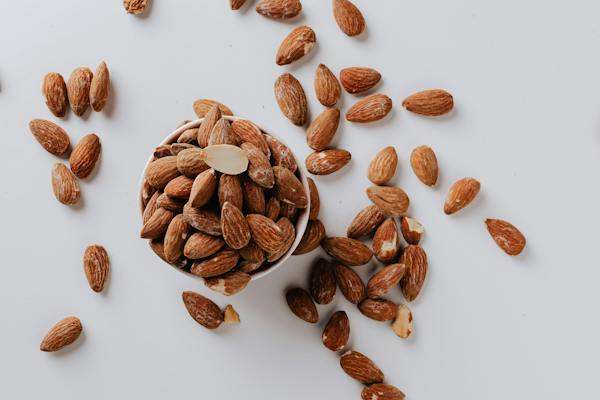Nutrition Facts of Tomato: A Guide to Health Benefits
Introduction: An edible fruit with a round or oval form, tomatoes are often red when ripe but can also be yellow, orange, green, or purple depending on the variety having nutrition facts of tomato. Although it is technically a fruit, due to its wonderful flavor, it is frequently employed as a vegetable in culinary applications. The Solanaceae family, which also contains plants like potatoes, eggplants, and peppers, is where tomatoes are from. Smooth, shiny skin and juicy flesh with lots of seeds are what make tomatoes unique. They are a common element in numerous cuisines all around the world and have a rich, slightly sweet flavor. Tomatoes are a typical pizza topping as well as an ingredient in sauces, soups, salads, and sandwiches. They are also employed in the production of processed foods like ketchup, tomato paste, canned tomatoes, and others. Nutrition Facts of Tomato: Sure, let’s examine the essential elements present in tomatoes in more detail: Serving size and caloric content • Due to their low-calorie content, tomatoes are a wonderful option for anyone trying to keep a healthy weight. • According to size and maturity, a normal medium-sized tomato has between 22 and 30 calories, though this can vary significantly, as does serving size and method of consumption. • One cup of diced tomatoes, for instance, provides roughly 32 calories. Carbs, including Dietary Fiber • Tomatoes are a good source of carbs, primarily in the form of natural sugars and dietary fiber. • The amount of carbs in a medium-sized tomato varies based on its size and level of ripeness, but it typically includes between 4-6 grams. It promotes healthy digestion, maintains intestinal regularity, and may increase sensations of fullness. • Approximately 1-2 grams of dietary fiber are included in a medium-sized tomato. Protein Content • Tomatoes do have some protein, but it is a negligible amount when compared to other protein-rich foods like meat, beans, and dairy products. • Typically, a medium-sized tomato has 1-2 grams of protein. • Although tomatoes are not a significant source of protein in the diet, they can increase the amount of protein consumed when added to a meal. Healthy Fats • Tomatoes have a fairly low-fat level, with the majority of that fat being unsaturated fats, which are regarded as “healthy” fats. • Less than 1 gram of fat is present in a medium tomato. • People seeking low-fat meal options should consider tomatoes. Vitamins Tomatoes are rich in several vitamins, including: • Vitamin C: One of the standout vitamins in tomatoes, one medium-sized tomato can provide around 20-25 mg of vitamin C. This vitamin is essential for the immune system, skin health, and wound healing. • Vitamin K: Vitamin K is also present in tomatoes, which is good for blood clotting and bone health. A medium-sized tomato typically contains 7-10 micrograms of vitamin K. • Folate (vitamin B9): Folate is essential for cell division and DNA synthesis. A medium-sized tomato contains about 6-10 micrograms of folate. Minerals • Tomatoes are an excellent source of several minerals, the most significant of which is potassium. • Potassium: A medium-sized tomato provides about 300-400 mg of potassium, which is necessary for maintaining healthy muscle and nerve function as well as for regulating blood pressure. Health Benefits of Tomato: Let’s get into more depth about the nutrition facts of tomatoes and the advantages to health that eating tomatoes has: 1. Heart and Vascular Health Heart disease prevention: Tomatoes are high in potassium, a mineral that is essential for maintaining blood pressure. Sufficient potassium consumption can help lower blood pressure, lowering the risk of heart disease and high blood pressure. LDL cholesterol has decreased: Low-density lipoprotein (LDL), or “bad” cholesterol, can be reduced because to the fiber and antioxidants in tomatoes. Heart disease is at risk due to high LDL cholesterol. Reduce inflammation: Lycopene, a significant antioxidant found in tomatoes, has anti-inflammatory qualities that may help reduce inflammation in blood vessels. Lowering the danger of atherosclerosis, or artery hardening. 2. Cancer prevention Lycopene and Cancer: Lycopene, the tomato’s red pigment, has been thoroughly researched for its potential anti-cancer effects. It is especially linked to a decreased risk of prostate cancer. Antioxidants: Tomatoes are a good source of many antioxidants, including vitamin C, which can help the body fight off dangerous free radicals. By preventing DNA damage, this ant-oxidative effect can lower the chance of developing certain malignancies. Folate content: Tomatoes provide folate, which is necessary for the synthesis and maintenance of DNA. The risk of some cancers, including colorectal cancer, may be decreased by consuming a diet high in folate. 3. Skin Health Sun Protection: Regular tomato eating can offer some defense against the damaging UV rays of the sun. The skin’s built-in protection against sunburn is strengthened by the lycopene in tomatoes. Collagen formation: Tomatoes contain vitamin C, which is necessary for the synthesis of collagen, a protein that preserves skin suppleness and delays the onset of premature aging. Delays the aging process of the skin: Tomatoes’ antioxidants aid in the battle against oxidative stress, which can cause premature aging. Skin that appears healthier and younger as a result of this. 4. Vision Support Vitamin A: which supports vision, is present in tomatoes as beta-carotene, a vitamin A precursor. Age-related macular degeneration (AMD) and maintaining strong eyesight, particularly in low-light situations, are both made possible by vitamin A. Lutein and zeaxanthin: These carotenoids enhance eye health by shielding the eyes from damaging high-energy light waves like ultraviolet radiation. They are also present in tomatoes. They can aid in lowering the risk of age-related macular degeneration (AMD) and cataracts, two prevalent eye disorders that can impair vision in older people. Hydration: The high water content of tomatoes aids in general hydration. Maintaining proper hydration helps keep the eyes moist and promotes the production of tears, which lowers the risk of dry eyes and the associated pain. Lower eye inflammation: Tomatoes include anti-inflammatory and antioxidant components that can help lower eye inflammation, which can be … Read more









